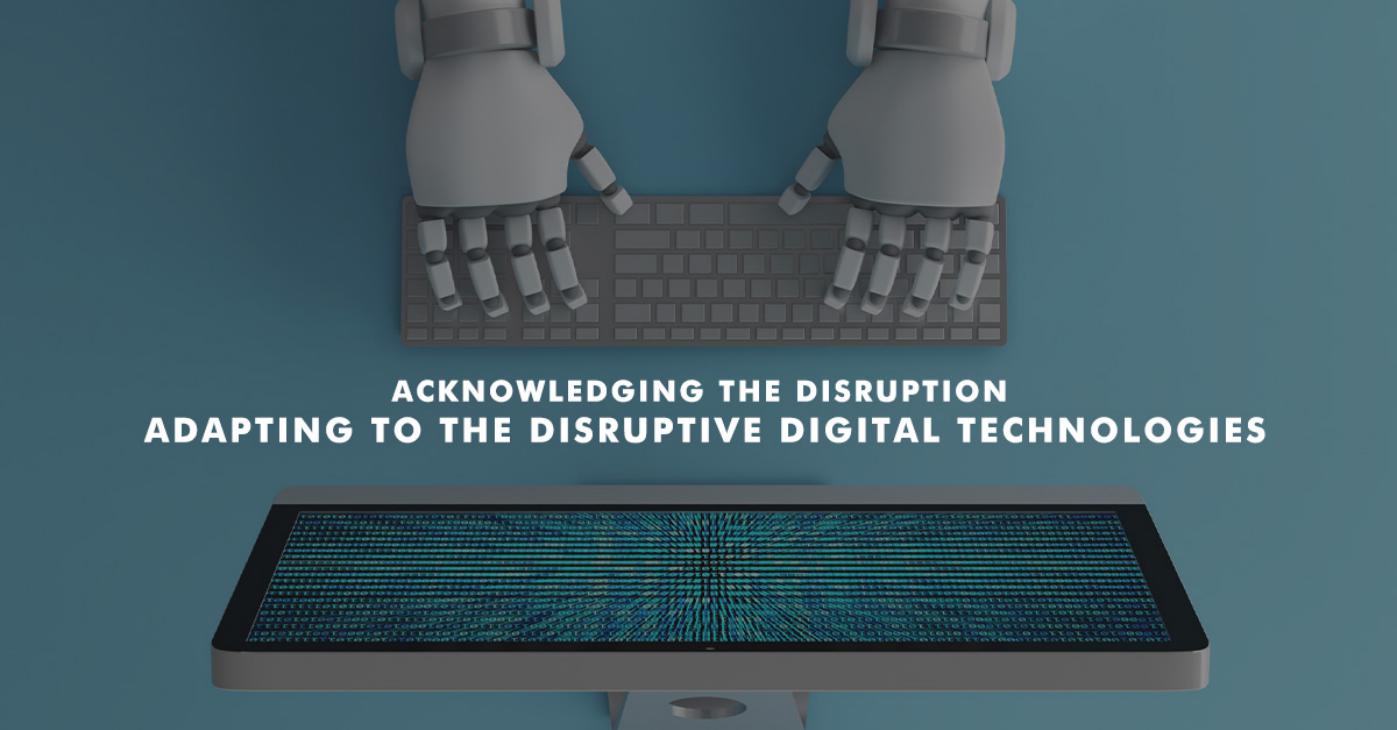
Acknowledging The Disruption: Adapting To The Disruptive Digital Technologies
“Making the most of the digital disruption is not about exploring the disruptive technologies; instead, it is about acknowledging those disruptive technologies by leveraging on the potential they possess.”
Digital disruption is all around. Almost every business practice across the industries is evolving itself to disruptive technologies. Companies are entirely focusing on emerging technologies such as AI, Cloud Computing, RPA, IoT, and others; from the areas, they operate into the services and products they offer.
The digital transformation occurred with the rising advent of digitization and digitalization of business units with the emergence of Industrial Revolution 4.0, the digital revolution as they call it. COVID-19 pandemic gave rise to the digital transformation, making the businesses go digital; and adopting digital practices in the way business is done.
Businesses, initially, found it difficult to adapt themselves to digitization owing to fewer traditional digital practices in place.
However, later on, they started adapting to the digital business practices to make themselves abreast with the digital technologies and flourish in the longer run.
Digital Disruption – The Paradigm Shift:
Digital technologies are accelerators of innovation. They improve efficiency, cut costs, and enhance products and services’ performance across the industries.
The future of business practices is unimaginable without integrating digital transformation in its business practices. Organizations are adopting digital practices.
Some go for in-house digitization, while others collaborate with third-party vendors to embed digitization in their business practices.
Furthermore, a few organizations are investing heavily in emerging technologies to stay ahead in making the most of disruption. As per a recent survey, the pandemic gave rise to the increased used of emerging technologies. The adoption of AI among the organizations increased by 9% in the US once the pandemic emerged.
Almost 28% of the organizations reported adapting to emerging technologies in the US; while 40% of organizations outside the US adopted emerging technologies to cope with the rising disruption that pandemic caused.
This paradigm shift creates a roadmap for the upcoming days where more and more businesses will make the most of the disruption to remain competitive in the businesses.
Acknowledging the Digital Disruption:
Digital disruption is prevalent these days. In almost every business, digital transformation is taking place.
Businesses are making the most of this digital disruption to emerge as top players combatting the challenges that digitization of business practices tends to offer. The steps below provide an overview of adapting to the digital practices that result in long-term benefits.
Defining the Marketplace:
For any business to remain competitive in the market, leveraging the emerging technologies; defining the marketplace plays an utmost important role in adapting to digital practices.
It includes knowing the customers, identifying the demographics, understanding the customers’ needs, and then defining the strategy for the digital disruption in the products and services.
Digital disruption marketplace framework results in adapting to digital disruption in a more efficient manner cutting the costs and resulting in a rise in efficiency of business practices.
Implementing Customer-driven Approach:
Having a happy customer is something every organization craves. Customers make or break the businesses they say, and it is true among the businesses, especially those that directly deal with the customers, the B2C businesses.
Digitization is not only making the businesses incorporating innovative technologies but also changing customer behavior.
It is no longer to understand how the customers behave based on the trends as disruptive technologies make it challenging to understand the customers’ needs.
However, it invokes the need for a data-driven approach to arrive at a customer-driven system and understand the customers’ behavior.
Making a move:
Implementing digitization in business practices is not easy as it seems. It includes a set of noticeable practices.
Making a move is about implementing the digital practices and making the most of those practices by acknowledging those digital practices. Once the business objectives are defined and consumer behavior is understood, the next step is to implement those disruptive technologies.
While AI needs a well-defined structural framework, cloud computing needs a risk resilient environment; whereas IoT demands a robust amalgamation of technologies and sensors. Furthermore, making a move also involves high expertise in understanding disruptive technologies and implementing them.
The move of “making a move” ensures the effective implementation of the emerging technologies and results in long-term benefits for the organizations.
Conclusion:
Digital disruption is increasing massively among business practices. Emerging technologies are here to stay, making the businesses adapt to them in one way or the other.
Digital transformation will keep on evolving businesses.
By acknowledging the disruption in the right direction by understanding the customer, implementing the digital practices, and making a move by acknowledging the disruption will make the businesses flourish and enable the businesses to lead from the front.





